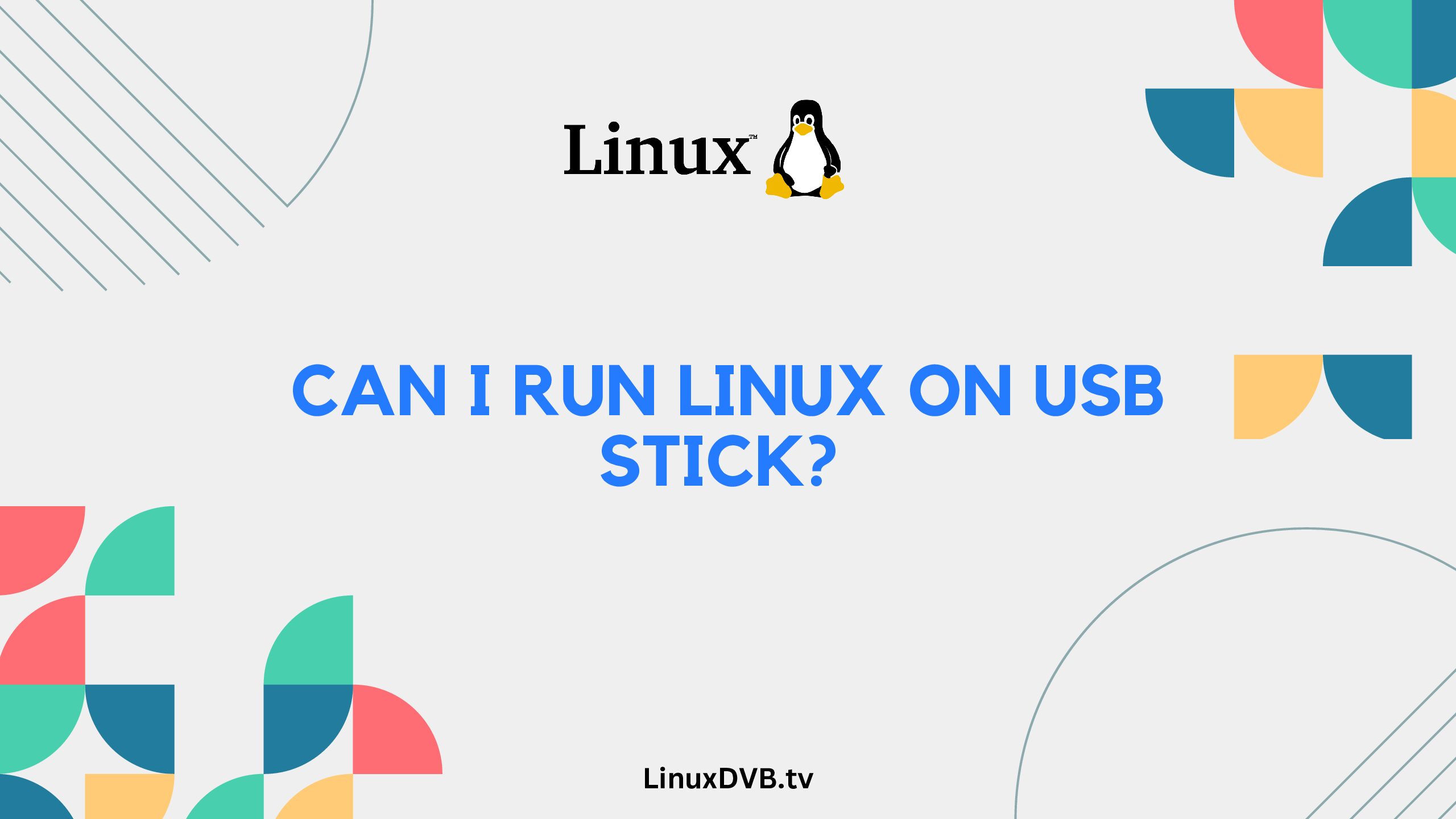Introduction
Are you curious about running Linux on a USB stick? This guide will take you through the process of installing and using Linux on a portable USB drive. Whether you’re a Linux enthusiast looking for a flexible way to carry your OS or someone exploring the world of Linux for the first time, this article will provide you with the insights and steps you need. Let’s dive in and explore how you can run Linux on a USB stick effectively.
Table of Contents
Can I Run Linux on USB Stick?
Yes, you can definitely run Linux on a USB stick! Running Linux from a USB drive offers various benefits, including portability, data security, and the ability to carry your customized OS environment with you. This is particularly useful if you want to work on different computers without making any changes to the host systems. Moreover, it’s a fantastic way to experiment with Linux distributions before committing to a full installation. Let’s explore the detailed steps to get Linux up and running on your USB stick.
Step-by-Step Guide to Run Linux on USB Stick
Selecting a Linux Distribution
Before you begin, you need to choose a Linux distribution that suits your needs. Popular choices include Ubuntu, Fedora, and Linux Mint. Ensure you download the ISO file for the distribution you prefer.
Creating a Bootable USB Drive
- Gather the Required Tools: To create a bootable USB drive, you’ll need a USB stick with sufficient storage space (at least 16GB) and a computer with internet access.
- Download and Install a USB Imaging Tool: Download a USB imaging tool like “Rufus” or “Etcher.” These tools allow you to write the Linux ISO file to the USB drive effectively.
- Insert USB Drive and Launch the Tool: Insert the USB drive into your computer and open the USB imaging tool.
- Select the Linux ISO File: In the tool, locate and select the Linux ISO file you downloaded earlier.
- Choose the USB Drive: Select your USB drive from the list of available devices.
- Start the Imaging Process: Click on the “Start” or “Write” button to initiate the process. This will copy the Linux distribution to your USB drive and make it bootable.
Booting from the USB Drive
- Restart Your Computer: Insert the bootable USB drive into your computer and restart it.
- Access the Boot Menu: During startup, press the designated key (usually F2, F12, or ESC) to access the boot menu. Select the USB drive as the boot device.
- Install or Try Linux: Once the USB drive boots, you’ll have the option to either install Linux on your computer’s hard drive or try it out without installing. Choose the option that suits your needs.
Installing Linux on USB Stick
- Choose Installation Options: If you decide to install Linux, follow the on-screen prompts to select language, keyboard layout, and installation preferences.
- Select Installation Location: When prompted, choose the USB drive as the installation location. Be cautious not to select your computer’s hard drive.
- Complete the Installation: Follow the installation wizard’s instructions to complete the installation process. This may involve creating user accounts, setting passwords, and configuring system settings.
Using Linux from USB Stick
Congratulations! You now have Linux installed on your USB stick. You can plug the USB drive into any compatible computer, boot from it, and access your Linux environment. Remember that the performance might be slightly slower compared to a regular installation, but it offers you the flexibility to use Linux on different machines.
FAQs about Running Linux on USB Stick
Can I Install Software on the USB-Stored Linux?
Absolutely! You can install software, customize settings, and even save files on the USB-stored Linux, just like on a regular installation.
Will My Data Be Saved on the USB Drive?
Yes, your data will be saved on the USB drive itself. It’s a portable environment that retains your files and settings.
Can I Encrypt the USB-Stored Linux for Security?
Indeed, you can encrypt the USB-stored Linux for enhanced security. Most Linux distributions offer encryption options during installation.
Is It Possible to Update the USB-Stored Linux?
Yes, you can update your USB-stored Linux to ensure you have the latest security patches and software updates.
Can I Run Linux on Any Computer?
In theory, yes. However, some computers might have compatibility issues or limitations with booting from USB drives. It’s recommended to check the compatibility before relying on it.
Can I Use Persistent Storage on the USB-Stored Linux?
Certainly! Persistent storage allows you to save changes and data across sessions, making it a handy feature for a portable Linux environment.
Can I run Linux on USB stick?
Yes, you can run Linux on a USB stick as a portable operating system.Can Linux run on a USB stick?
Yes, Linux can be installed and run from a USB stick.Can I just run Linux from a USB?
Yes, you can run Linux directly from a USB without installing it on your computer.Can I use Linux on flash drive?
Yes, you can use Linux on a flash drive by installing and running it from the drive.Conclusion
Running Linux on a USB stick opens up a world of possibilities. Whether you’re a tech enthusiast, a developer, or simply someone who wants to explore Linux, this approach offers flexibility and convenience. By following the steps outlined in this guide, you can create your own portable Linux environment and take it wherever you go. Embrace the power of Linux and carry your personalized OS with you on a USB stick!

